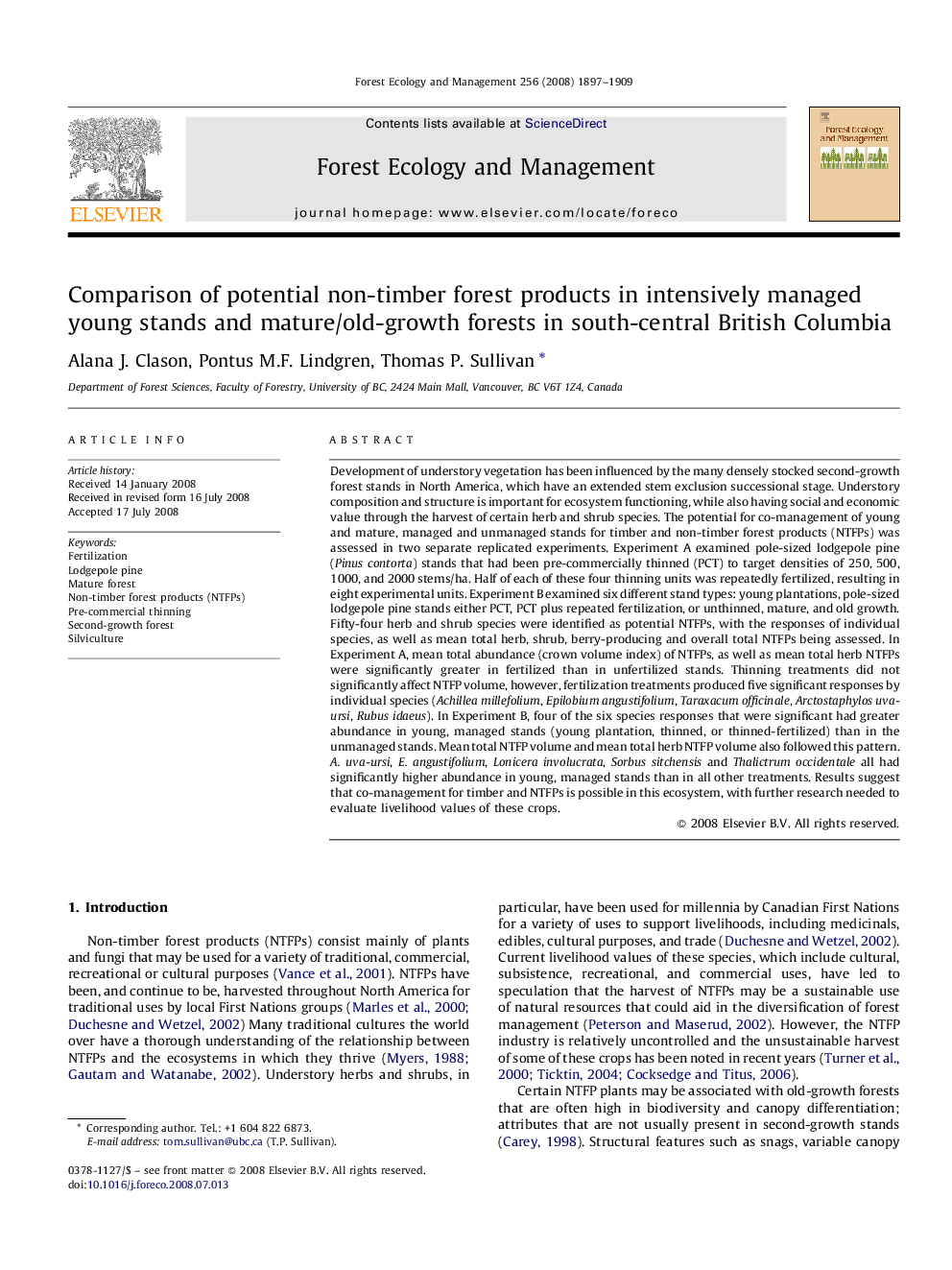| Article ID | Journal | Published Year | Pages | File Type |
|---|---|---|---|---|
| 88688 | Forest Ecology and Management | 2008 | 13 Pages |
Development of understory vegetation has been influenced by the many densely stocked second-growth forest stands in North America, which have an extended stem exclusion successional stage. Understory composition and structure is important for ecosystem functioning, while also having social and economic value through the harvest of certain herb and shrub species. The potential for co-management of young and mature, managed and unmanaged stands for timber and non-timber forest products (NTFPs) was assessed in two separate replicated experiments. Experiment A examined pole-sized lodgepole pine (Pinus contorta) stands that had been pre-commercially thinned (PCT) to target densities of 250, 500, 1000, and 2000 stems/ha. Half of each of these four thinning units was repeatedly fertilized, resulting in eight experimental units. Experiment B examined six different stand types: young plantations, pole-sized lodgepole pine stands either PCT, PCT plus repeated fertilization, or unthinned, mature, and old growth. Fifty-four herb and shrub species were identified as potential NTFPs, with the responses of individual species, as well as mean total herb, shrub, berry-producing and overall total NTFPs being assessed. In Experiment A, mean total abundance (crown volume index) of NTFPs, as well as mean total herb NTFPs were significantly greater in fertilized than in unfertilized stands. Thinning treatments did not significantly affect NTFP volume, however, fertilization treatments produced five significant responses by individual species (Achillea millefolium, Epilobium angustifolium, Taraxacum officinale, Arctostaphylos uva-ursi, Rubus idaeus). In Experiment B, four of the six species responses that were significant had greater abundance in young, managed stands (young plantation, thinned, or thinned-fertilized) than in the unmanaged stands. Mean total NTFP volume and mean total herb NTFP volume also followed this pattern. A. uva-ursi, E. angustifolium, Lonicera involucrata, Sorbus sitchensis and Thalictrum occidentale all had significantly higher abundance in young, managed stands than in all other treatments. Results suggest that co-management for timber and NTFPs is possible in this ecosystem, with further research needed to evaluate livelihood values of these crops.
